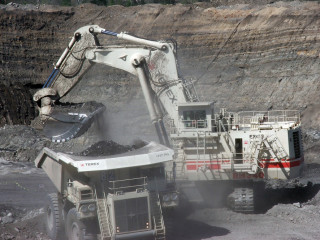Terex was created by acquisitions. Its genesis can be traced back to the old General Motors off-highway truck division based in Motherwell, which still exists today, albeit under Volvo ownership. But just about every brand within the group has been bought rather than created.
After it listed on the New York Stock Exchange in 1991 Terex embarked on perhaps the most sustained acquisitions spree that the construction machinery sector has seen.
At that time the company consisted of not much more than the off-highway truck division in Motherwell, along with Unit Rig, Fruehauf Trailer and Koehring Cranes in the USA.
Driven by Ron DeFeo, who joined from Case in 1992 and took over as president the following year, Terex spent the next 10 years taking over Clark Material Handling, O&K Mining, Simon, PPM mobile cranes (including P&H and Italian manufacturer Bendini), American Crane, Peiner and Comedil tower cranes, Fantuzzi, Noell, Franna, Fermec, Benford, Powerscreen, Cedar Rapids, Finlay, Atlas Weyhausen, Schaeff, Fuchs, Jacques, CMI and Bid-Well.
There was a clear Terex modus operandi: DeFeo, aided by Fil Filipov who ran the crane businesses, would assiduously cut costs in each new acquisition in a quest for shareholder value.
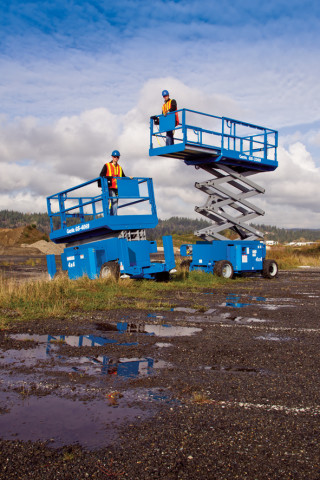
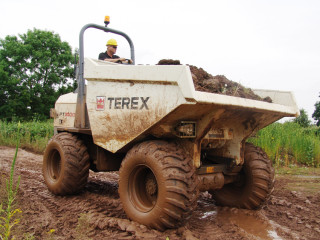
In 2002 came two significant acquisitions that changed Terex: Genie (aerial work platforms) and Demag (more cranes). Unlike previous acquisitions these were not distressed or niche companies but major players in their sectors.
Until now, the Terex model had been buying struggling businesses, stripping out cost and trying to rebuild something out of them. Terex was the Poundworld plant firm, piling high and selling cheap. Its adverts proclaimed that you could buy three Terex cranes for the price of two competitors. While German and Japanese manufacturers promoted their technological superiority and bullet-proof reliability, Terex’s slogan was ‘Simple, available and cost-effective’. They aimed to disrupt the markets in which they operated, and often succeeded.
The addition of Demag, and to a lesser extent Genie, changed this. Terex acquired the Demag mobile crane business when the giant Mannesmann industrial conglomerate was taken apart by Vodafone and Siemens. Demag cranes were more technologically advanced than most. Terex had joined the big league, no longer making just rough terrains and truck cranes – “commodity products”, DeFeo and Filipov called them – but now all terrain and heavy-duty crawler cranes, both highly engineered products.
And if Demag (along with Schaeff and Fuchs, acquired the same year) taught Terex to think like the Germans, Genie taught it to think like the Japanese, introducing Terex to the Toyota Production System management philosophy.
By now laden with debt, it was time to take stock and digest, and the acquisitions slowed.
Then came the global crash in 2008 that reduced Terex’s annual revenues from US$8bn to less than US$4bn and saw it plunge to a loss of nearly US$400m in 2008.
Time for a new strategy: diversification from construction equipment into industrial machinery. It bought the factory crane and port equipment business Demag Cranes AG (initially 82% in 2011, then all of it in 2012). This had originally been part of the Mannesmann group along with Demag Mobile Cranes but by this stage was wholly unconnected except for a common brand name.
Terex already had some port equipment in its portfolio – PPM reachstackers, Fantuzzi straddle carriers, Noell gantry cranes – but the rise of the Chinese in this market had made life harder. Demag AG, with its Gottwald mobile harbour cranes, added beef to Terex’s ports business. More substantially, the factory crane business was second only to Konecranes in world leadership. And 30% of its revenue came from equipment servicing, insulating it from economic cycles.
While the first Demag acquisition in 2002 repositioned Terex up the pecking order of crane manufacturers with top-notch technology, the second Demag acquisition had a different effect; it was the start of Terex repositioning itself away from construction equipment and into general industrial machinery.
However, it was to be Terex’s last substantial acquisition. Over the past six years Terex has been selling businesses even more quickly than it ever acquired them.
The disposal of the Motherwell construction trucks business in 2013, sold to Volvo for US$160m, was symbolic, since it represented the removal of the very foundations of the company. “Trucks no longer fit within our changing portfolio of lifting and material handling businesses,” said CEO Ron DeFeo at the time.
That same year the road building business – CMI and Cedarapids – was sold to Fayat.
In 2016 the German excavator business (Schaeff) was sold to Yanmar. Then in 2017 Terex GB (an amalgamation of the old Fermec and Benford brands) was sold to Mecalac and the India-based compact construction business went to Manitou.
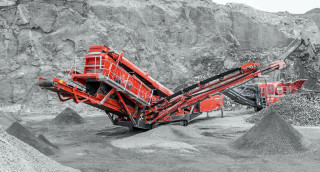

But not only was Terex getting out of construction machinery, it was also getting out of the industrial machinery services business that it had only recently dived into. The Demag factory crane business was sold, along with the port equipment interests (Gottwald, Noell and Fantuzzi brands) to Konecranes of Finland for US$1.3bn.
This sale to Konecranes came after the two companies had explored a complete merger. There had also been a takeover bid for Terex on the table from Chinese manufacturer Zoomlion.
By 2018, what remained of Terex was a substantial crane business (mobiles, crawlers and towers), a market leading powered access business and a predominantly Northern Ireland-based crushing & screening division.
But still the disposals continued. In February 2019 Tadano of Japan agreed to pay Terex US$215m for its Demag mobile and crawler crane manufacturing business, based in Germany. Soon after that a deal was done to sell the US truck crane business to Load King.
Terex still has some odds and ends of crane interests – including Comedil tower cranes and Bendini rough terrain cranes in Italy, and Franna pick & carry cranes in Australia, but it has to be assumed that these are open to offers. Terex now reports its financial results in two business segments: Aerial Work Platforms and Materials Processing. Over not very many years Terex Construction, Terex Cranes, Terex Roadbuilding, Terex Mining, Terex Utility Products and Terex Material Handling & Port Solutions have all come and gone.
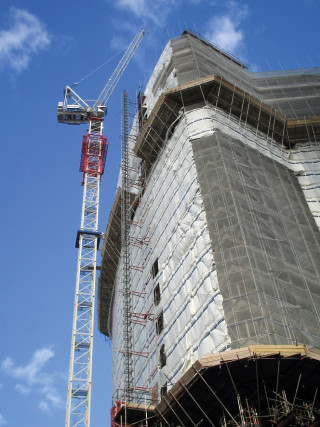
In the light of this potted history of acquisitions and disposals it would be easy to see Terex as an Icarus that flew too high and is now falling to earth. Easy, but wrong.
In fact, the tale of Terex has always been as much about disposals as acquisitions. It helps to think of Terex not so much as a construction equipment manufacturer than as a creature of Wall Street, with a leadership apparently more anxious to make great deals than to make great machines.
Right from the early days, well-chosen disposals have been as instrumental to the business as acquisitions, selling valuable assets to keep debt in check and raise funds for more attractive acquisitions. It sold Fruehauf to buy Clark in 1992, then sold Clark for a profit in 1996 to fund further deals. Terex bought Tatra in 2003 and then sold it in in 2007. Payhauler and O&K Mining were bought in 1997 and sold to Bucyrus International in 2010.
Branding has been treated similarly pragmatically, with some legacy brands being retained longer than others, sometimes ditched only to be revived again.
Terex’s path has rarely been predicable or linear but it has always been rational and pragmatic.
And despite its recent rash of disposals and less diverse product offering, it remains a major force with still a surprisingly wide product range. Over the past 10 or 15 years its ranking among global suppliers of construction machinery has generally been within the top 10. It is still there or thereabouts. Group revenues in 2018 topped US$5bn and the 2019 disposals are unlikely to impair results too much this year.
The powered access business, Terex Genie, turned over nearly US$2.6bn in 2018, making US$261m operating profit. The Materials Processing division was even more profitable, with operating profit of US$167m on sales of US$1.3bn. Cranes, by contrast, lost US$45m on US$1.3bn sales.
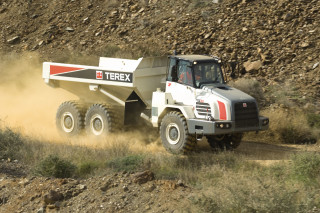
Fil Filipov, the Bulgarian refugee who played a key role in Terex’s acquisition years and ran the cranes side, had a motto that he was prone to quoting: “nishto ne e vechno” – nothing is forever.
Things come and things go. That may well yet be true of the entire Terex Corporation itself one day, but the sale of the construction machinery and the mobile cranes businesses is not the end of the book of Terex but merely the start of a new chapter.
Terex has forever been in transformation, always moving, never arriving.
This article was first published in the June 2019 issue of The Construction Index magazine
UK readers can have their own copy of the magazine, in real paper, posted through their letterbox each month by taking out an annual subscription for just £50 a year. Click for details.
Got a story? Email news@theconstructionindex.co.uk

